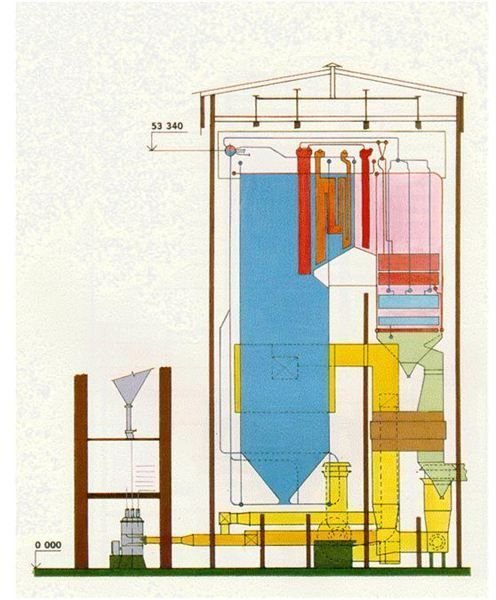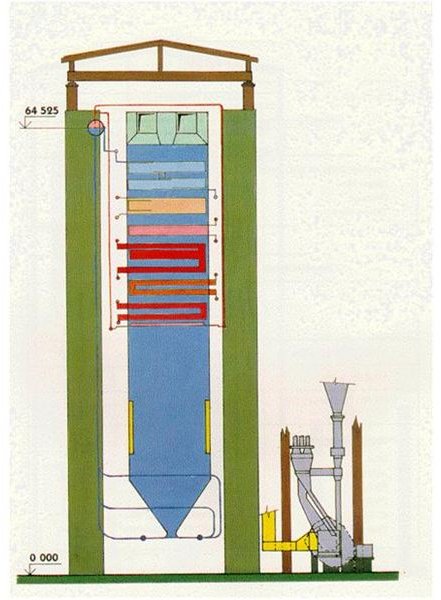Tower Types and Two Pass Boilers
The majority of boiler installations the world over are of the two pass design. However tower-type single pass designs find application in cases where the fuel used is highly erosive in nature. In the case of the once-through type of design, the tower type finds its application widely. The supercritical units normally go with tower type construction due to the fact that tower type can adapt to the spiral wall construction easily. The water walls of the furnace are four plane members that carry the weight of the furnace and connected equipment. The heat transfer tube bundles of superheater, reheater and economizer in the top pass all hang in one support system through vertical supporting tubes. This enables the boiler structure to respond to all transient phenomena arising from load changes or other dynamic processes. As the flue gases travel through the superheater, reheater, and economizer pressure parts section without any change in direction, the erosion rate in these types of boilers is lower. All the horizontal heat transfer sections of superheater, reheater and economizer are designed as drainable sections. However there are certain disadvantages with the tower type design of boilers.
Since the entire horizontal heat transfer surfaces have to penetrate though the furnace waterwall tubes in the upper portion, the sealing arrangement requires a careful design and erection. These areas are vulnerable points of air ingress in to the boiler if it is balanced draft or leakage points if it is a pressurized unit. Due to air ingress in these points, if it happens, the pressure parts get eroded near the penetration points and can cause leakage. This type of heat transfer surface arrangement does not allow parallel erection of pressure parts. Any pressure part failure in the superheater, reheater, and part of economizer is cumbersome to attend and leads to higher amount of down time. The very tall structure of the tower type design requires extra care and checking to be done if the unit is to be put in a high wind load or cyclone-prone area. The type of erection tools used should also be selected in such a way they can handle the higher height requirement of the tower type boiler. These types of boilers have higher amount of settlement of ash on the heat transfer surface and so they need a higher frequency of soot blowing.
In the case of the two pass design, the gas flow takes a turn from the furnace outlet through a small horizontal pass to the second pass where a part of the superheater surface, sometimes even a portion of reheater surface and economizer surface, is accommodated. Due to the change in direction of flue gas the ash particles segregate and lead to higher erosion rate in localized areas.
This design has the advantage that they have about 40 % fewer erection pressure parts welds and also parallel erection of first and second pass is possible, thus reducing the total erection time. Even though this type of design has an inherent disadvantage for high ash coals, there are designs for protecting the pressure parts from erosion, and the availability losses in these units have been contained due to pressure part failures by erosion.
Some boiler designers even today prefer a two pass design for sub-critical and supercritical units and feel they are more economical than the tower type.
Tower Type and Two Pass Boilers

